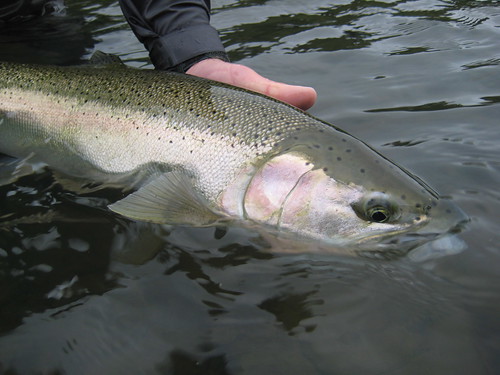The Best Insider Tips for Fishing in Willamette River
Fishing in the Willamette River offers anglers a unique experience amidst Oregon’s stunning landscapes. Renowned for its diverse fish population and scenic beauty, the Willamette River is a prime destination for both seasoned anglers and novices seeking an unforgettable fishing adventure. To make the most of your time on the river and reel in some impressive catches, it pays to have insider knowledge. Here, we unveil the best insider tips for fishing in the Willamette River.
Know the Regulations
Before you embark on your fishing excursion, familiarize yourself with the current regulations governing fishing in the Willamette River. Regulations can vary based on factors such as the time of year, species of fish, and specific stretches of the river. The Oregon Department of Fish and Wildlife (ODFW) provides up-to-date information on fishing regulations, including bag limits, size restrictions, and season closures. Adhering to these regulations ensures sustainable fishing practices and helps preserve the river’s delicate ecosystem.

Timing is Key
Understanding the seasonal patterns and migration habits of fish in the Willamette River is essential for a successful fishing trip. While the river offers year-round fishing opportunities, certain times of the year are more productive for specific species. Spring and fall are prime seasons for Chinook and Coho salmon runs, while summer months are ideal for targeting smallmouth bass and steelhead. Researching seasonal trends and consulting local fishing reports can help you plan your trip accordingly and increase your chances of landing a trophy catch.
Location Scouting
The Willamette River spans approximately 187 miles, offering a plethora of fishing spots to explore. From urban stretches flowing through Portland to more secluded areas nestled amidst scenic wilderness, the river caters to a variety of fishing preferences. Conducting thorough location scouting prior to your trip can help you identify prime fishing spots based on factors such as water depth, structure, and current flow. Additionally, consider exploring tributaries and backwaters, which often harbor abundant fish populations and provide refuge from strong currents.

Optimize Your Tackle
Selecting the right tackle and gear can significantly enhance your fishing success on the Willamette River. For salmon fishing, invest in quality rods, reels, and lines capable of handling the powerful runs of these prized fish. When targeting smallmouth bass, opt for medium-action spinning or baitcasting rods paired with lures such as crankbaits, jigs, or soft plastics. Additionally, carrying a variety of bait options, including live bait such as worms or baitfish, can appeal to the diverse feeding preferences of fish in the river.
Adapt to Conditions
Weather and environmental conditions play a crucial role in determining fish behavior and activity levels in the Willamette River. Keep a close eye on weather forecasts and water conditions, adjusting your fishing techniques accordingly. During periods of high water or turbidity, fish may seek refuge in calmer waters near shorelines or structures. Conversely, during low water conditions, focusing on deeper pools and runs can yield better results. Remaining flexible and adapting your approach based on prevailing conditions increases your chances of hooking into fish.

Respect the Environment
As stewards of the river, it’s imperative to practice responsible angling and minimize your environmental impact. Dispose of trash properly, including fishing line and plastic baits, to prevent pollution and protect wildlife. Avoid disturbing nesting birds and sensitive aquatic habitats, and adhere to catch-and-release practices whenever possible, especially for threatened or endangered species. By respecting the environment and practicing ethical fishing practices, you contribute to the preservation of the Willamette River’s natural beauty for future generations to enjoy.
Embrace the Night Bite
While many anglers prefer to fish during daylight hours, the Willamette River offers excellent opportunities for night fishing enthusiasts. As the sun sets and temperatures cool, nocturnal predators such as walleye and catfish become more active, prowling the river in search of prey. Utilize techniques suited for low-light conditions, such as fishing with glow-in-the-dark lures or using lighted bobbers to track your bait’s movement. Additionally, invest in a reliable headlamp or portable lighting to ensure visibility and safety during nighttime fishing excursions.
Harness the Power of Technology
Incorporating modern technology into your fishing arsenal can give you a distinct advantage when navigating the waters of the Willamette River. Equip yourself with a fishfinder or sonar device to locate underwater structures, depth changes, and schools of fish with precision. GPS navigation systems can also be invaluable for marking productive fishing spots and plotting efficient routes along the river. Stay connected with real-time weather updates and river conditions through smartphone apps or portable weather stations, allowing you to make informed decisions on when and where to fish.
Experiment with Presentation
Variety is the spice of life—and fishing! Don’t be afraid to experiment with different presentation techniques to entice finicky fish in the Willamette River. Vary your retrieval speeds, alter the depth at which you fish, and experiment with different lure colors and sizes to gauge fish preferences on any given day. When targeting trout or steelhead, consider employing drift fishing or float fishing techniques using natural baits such as salmon eggs or shrimp. Adapting your presentation to match prevailing conditions and fish behavior increases your chances of triggering strikes and hooking into fish.
Tap into Local Knowledge
One of the most valuable resources for anglers seeking success on the Willamette River is the wealth of local knowledge and expertise available from fellow anglers, guides, and bait shops. Strike up conversations with locals at boat ramps, fishing access points, or tackle shops to glean insider tips and firsthand insights into productive fishing areas, seasonal patterns, and effective techniques. Joining online fishing forums or social media groups dedicated to Willamette River angling can also connect you with a community of like-minded anglers who are eager to share their experiences and advice.

Practice Patience and Persistence
Fishing in the Willamette River requires patience, perseverance, and a willingness to embrace the ebb and flow of nature. Not every fishing trip will result in a trophy catch, but by maintaining a positive attitude and staying persistent, you increase your chances of success over time. Remember that each outing on the river offers its own unique rewards, whether it’s the tranquility of nature, the camaraderie of fellow anglers, or the thrill of the chase. Approach each fishing excursion with a sense of adventure and appreciation for the wonders of the Willamette River, and you’ll find that the journey itself is its own greatest reward.
Fishing in the Willamette River offers a rewarding and exhilarating experience for anglers of all skill levels. By incorporating these insider tips into your fishing arsenal, you’ll be well-equipped to navigate the river’s diverse waters and reel in your next trophy catch. Remember to stay informed, respect regulations, and cherish the natural wonders of this iconic Pacific Northwest waterway. With the right preparation and a bit of luck, your adventure on the Willamette River is sure to be an unforgettable journey into the heart of Oregon’s angling paradise.
